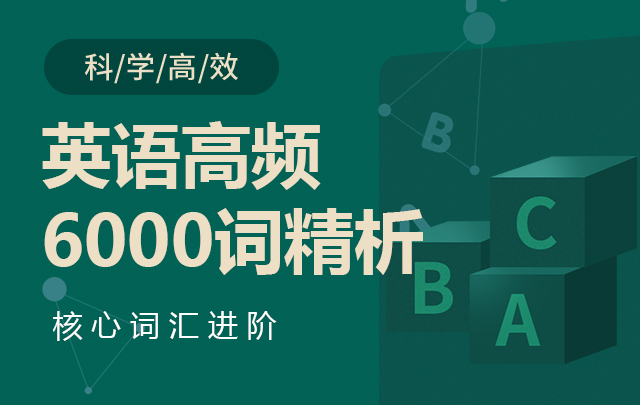Japan's Moon Vehicle Lands Successfully but Is Losing Power
日本的月球车成功着陆,但正在失去动力
【听力音频】
--------------------------------------------------------------------------
By Gregory Stachel
19 January 2024
Japan on Friday became the fifth country to land a spacecraft on the moon. The mission's aim was to carry out an exact landing and to collect information about the Earth's only natural satellite.
Japan's space agency, known as JAXA, said its Smart Lander for Investigating the Moon, called SLIM, landed on the moon's surface at 15:20 UTC Friday. It then re-established communication with Earth. But its solar panels were not able to create electricity, possibly because they are pointed in the wrong direction.
"SLIM is now operating only on its battery, and we are prioritizing the transfer of its data to Earth," Hitoshi Kuninaka, the head of JAXA's research center, told reporters.
A battery is a device that stores electricity.
Space officials are attempting to save power by turning off equipment like its heaters. But SLIM's battery only lasts "a few hours."
JAXA hopes a change in the sun's position in the sky will cause the panels to receive sunlight to power the vehicle, Kuninaka said. He added that it takes 30 days for the direction of sunlight to change on the moon.
SLIM attempted to land within 100 meters of its target, instead of within several kilometers. JAXA said this exact landing technology will become a powerful tool in the search for oxygen, fuel, and water on the moon.
Landings on the moon
Japan aims to play a bigger part in space, partnering with ally the United States. Japan is also home to several private space companies. JAXA aims to send an astronaut to the moon as part of NASA's Artemis program in the next few years.
But the Japanese space agency has recently faced several setbacks in rocket development. They include the launch failure in March of its new H3 rocket which is meant to compete with rockets made by private companies like SpaceX.
The failure caused delays in Japan's space missions, including SLIM and joint moon exploration with India. India made a historic landing on the moon's most southern point with its Chandrayaan-3 probe.
JAXA has twice landed on asteroids, but the moon's gravity makes landing on it more difficult, its scientists said. Three missions to the moon by Japanese company ispace, Russia's space agency, and American company Astrobotic have failed in the past year.
Only four nations, the former Soviet Union, the United States, China and India, have successfully carried out a soft landing on the moon. No private company has been able to do it.
SLIM measures 2.4 meters by 2.7 meters—about the size of a car. It has two main engines, along with 12 smaller thrusters. It also includes equipment like solar cells, radar, and cameras.
SLIM weighed 700 kilograms at launch. That is less than half the weight of India's Chandrayaan-3.
As the probe got closer to the surface, it was designed to compare its camera's images with satellite photos of the moon. JAXA has said this method permits an exact landing.
On landing, reports say SLIM successfully released two small robot probes. One moves by taking small jumps, or hops. The other is an even smaller baseball-sized wheeled vehicle. Sony Group and toy company Tomy, and several Japanese universities developed the robots.
SLIM was launched on Japan's H-IIA rocket in September. It has taken a fuel-saving four-month trip to the moon.
I'm Gregory Stachel.
Kantaro Komiya reported this story for Reuters. Gregory Stachel adapted it for VOA Learning English.
--------------------------------------------------------------------------
作者:格雷戈里·斯塔切尔
2024年1月19日
周五,日本成为第五个在月球上着陆航天器的国家。这次任务的目标是进行精确着陆并收集关于地球唯一自然卫星的信息。
日本宇宙航空研究开发机构(简称JAXA)表示,其名为SLIM的“智能月球探测着陆器”于周五协调世界时15:20在月球表面着陆。然后,它重新与地球建立了通信。但是,其太阳能板无法产生电力,可能是因为它们指向的方向错误。
JAXA研究中心的负责人Hitoshi Kuninaka告诉记者:“SLIM现在只依靠其电池运行,我们正在优先将其数据传输到地球。”
电池是一种储存电力的设备。
空间官员们正在尝试通过关闭设备,如加热器,来节省电力。但是SLIM的电池只能持续“几个小时”。
Kuninaka表示,JAXA希望太阳在天空中的位置的变化将使太阳能板接收到阳光以供给车辆电力。他补充说,在月球上,阳光的方向需要30天才能改变。
SLIM试图在其目标的100米内着陆,而不是在几公里内。JAXA表示,这种精确着陆技术将成为在月球上寻找氧气、燃料和水的强大工具。
月球着陆
日本希望在太空中发挥更大的作用,与盟友美国合作。日本也是几家私人太空公司的所在地。在接下来的几年里,JAXA计划作为NASA的阿尔忒弥斯计划的一部分,将一名宇航员送上月球。
但是,日本宇宙航空研究开发机构最近在火箭开发上遭遇了几次挫折。其中包括今年3月份新型H3火箭的发射失败,这种火箭本应与SpaceX等私人公司制造的火箭竞争。
这次失败导致日本的太空任务,包括SLIM和与印度的联合月球探索任务,都受到了延误。印度的Chandrayaan-3探测器在月球最南端实现了历史性的着陆。
JAXA已经两次在小行星上着陆,但其科学家表示,月球的引力使得在其上着陆更为困难。过去一年里,日本公司ispace、俄罗斯的太空机构和美国公司Astrobotic对月球的三次任务都失败了。
只有四个国家,前苏联、美国、中国和印度,成功地在月球上实现了软着陆。没有私人公司能够做到这一点。
SLIM的尺寸为2.4米乘2.7米,大约是一辆汽车的大小。它有两个主发动机,以及12个较小的推进器。它还包括太阳能电池、雷达和摄像头等设备。
SLIM在发射时的重量为700公斤。这比印度的Chandrayaan-3的重量还要轻一半。
随着探测器接近月球表面,它被设计为将其摄像头的图像与月球的卫星照片进行比较。JAXA表示,这种方法可以实现精确着陆。
据报道,着陆后,SLIM成功释放了两个小型机器人探测器。其中一个通过小跳跃或跳跃来移动。另一个甚至更小,是一个棒球大小的带轮子的车辆。索尼集团和玩具公司Tomy以及几所日本大学开发了这些机器人。
SLIM于9月份通过日本的H-IIA火箭发射。它已经进行了为期四个月的节省燃料的月球之旅。
我是Gregory Stachel。
Kantaro Komiya为路透社报道了这个故事。Gregory Stachel为VOA学习英语改编了它。
--------------------------------------------------------------------------
本故事中的词汇
mission – n. 任务,使命(由飞机或航天器执行的特定任务)
solar panel – n. 太阳能板(一种大型、平面的设备,利用太阳光或热量产生电力)
prioritize – v. 优先处理(按照重要性对事物进行组织,使最重要的事情优先处理)
transfer – v. 转移(电子方式将数据或资金从一个地方移动到另一个地方)
probe – n. 探测器(用于从外太空获取信息并将其发送回地球的设备)
toy – n. 玩具(孩子玩的东西)
本文关键字:
 免费试听
免费试听

时长 : 5:22 主讲 : 金格妃

时长 : 27:51 主讲 : 金格妃

时长 : 17:20 主讲 : 郭宁

时长 : 3:54 主讲 : 金格妃

时长 : 26:58 主讲 : 乔迪

时长 : 26:58 主讲 : 乔迪

时长 : 26:58 主讲 : 乔迪

时长 : 3:54 主讲 : 金格妃

时长 : 1:46 主讲 : 金格妃
 推荐阅读
推荐阅读
Webb Telescope Captures Images of 19 Spiral Galaxies 韦伯望远镜捕捉到19个螺旋星系的图像
来源 : 网络 2024-02-19 13:01:00 关键字 :
Student Academy Awards Provide ‘Momentum’ for Young Filmmakers 学生学院奖为年轻电影制作人提供“动力”
来源 : 网络 2024-02-19 11:48:00 关键字 :
Do You Have a Doppelg?nger ? 你有一个“分身”吗?
来源 : 网络 2024-02-18 11:37:00 关键字 :
Is Elon Musk Worth $55 8 Billion to Tesla?埃隆·马斯克对特斯拉来说价值558亿美元吗?
来源 : 网络 2024-02-18 11:32:00 关键字 :
Remembering Chita Rivera 记忆中的奇塔·里维拉
来源 : 网络 2024-02-16 11:26:00 关键字 :
Women to Take Center Stage at the Grammys 女性将在格莱美奖上占据主导地位
来源 : 网络 2024-02-16 11:20:00 关键字 :
Reduction and Assimilation 音节减少和同化
来源 : 网络 2024-02-15 11:13:00 关键字 :
Why Is Canada Limiting Foreign Students? 为什么加拿大要限制外国学生?
来源 : 网络 2024-02-15 11:07:00 关键字 :
It Has Never Been More Costly to See the Super Bowl 观看超级碗的费用从未如此高昂
来源 : 网络 2024-02-14 11:02:00 关键字 :
Australian Filmmaker Shows Japanese Single Mothers, Children Face Poverty 澳大利亚电影制片人展示日本单亲妈妈和孩子面临贫困的情况
来源 : 网络 2024-02-14 10:55:00 关键字 :


 精品课
精品课
价格 : 0元
限报人数:1000人
价格 : 0元
限报人数:1000人
价格 : 0元
限报人数:1000人
价格 : 0元
限报人数:1000人
 阅读排行榜
阅读排行榜
 相关内容
相关内容